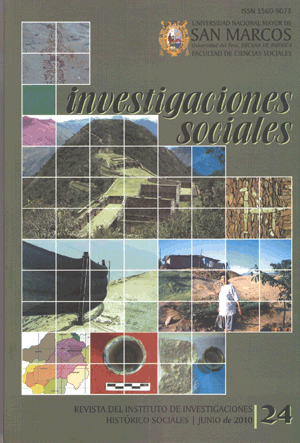The Environment in Central Peru during the 18th century: the studies problem
DOI:
https://doi.org/10.15381/is.v14i24.7304Keywords:
Lima, 18th century, Environment, Climatic Variability, Temperature.Abstract
In order to use historical data for revealing temperature changes in Central Peru during the 18th century, it is necessary to recognize and interpret the cultural, economic and social responses when confronted with marked environmental fluctuations. These caused changes to the farming systems, such as reduced productivity and revenues in all social sectors, particularly among the indigenous communities. Faced with this situation, the urban and rural population of Lima responded in numerous ways, from reorganizing irrigation systems, improved technologies and reduced taxes, to increased devotional Catholic ceremonies and in the indigenous sphere a public resurgence of ancestral cults supposedly eliminated in the 17th century.Downloads
Published
Issue
Section
License
Copyright (c) 2010 Carlos Guillermo Carcelén Reluz

This work is licensed under a Creative Commons Attribution-NonCommercial-ShareAlike 4.0 International License.
AUTHORS RETAIN THEIR RIGHTS:
a. Authors retain their trade mark rights and patent, and also on any process or procedure described in the article.
b. Authors retain their right to share, copy, distribute, perform and publicly communicate their article (eg, to place their article in an institutional repository or publish it in a book), with an acknowledgment of its initial publication in Investigaciones Sociales.
c. Authors retain theirs right to make a subsequent publication of their work, to use the article or any part thereof (eg a compilation of his papers, lecture notes, thesis, or a book), always indicating the source of publication (the originator of the work, journal, volume, number and date).













